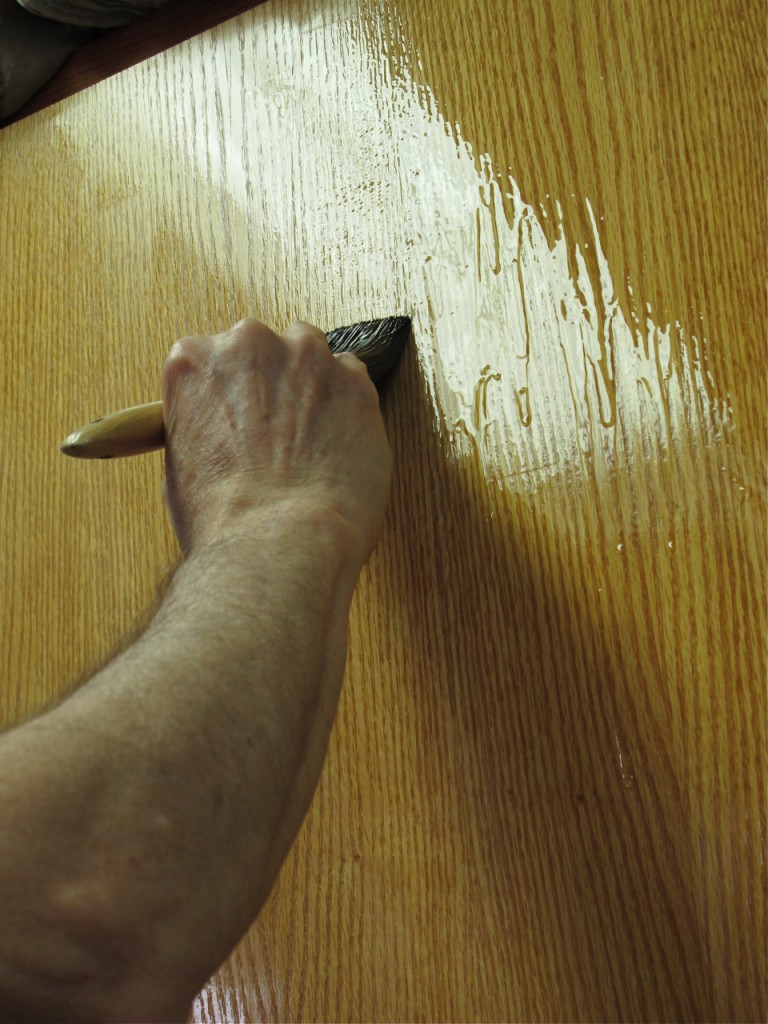We may receive a commission when you use our affiliate links. However, this does not impact our recommendations.

Notice in this picture how easy it is to see the developing runs in a reflected light and how difficult it is to see them elsewhere.
One of the biggest problems woodworkers have is runs and sags drying in their finishes, especially with slower drying finishes such as varnish (including polyurethane and wiping varnish) and water-based finish. They can also happen in shellac, though it dries faster.
The remedy is simple. You should never have runs or sags drying in your finish whether you’re brushing or spraying. The way to achieve this level of perfection is to watch the surface you’re brushing or spraying in a reflected light. You may need to arrange some lights or move your body and your head often to see what’s happening.
With a reflection you can see easily when a finish begins sagging or running. Then it’s a simple matter of using your brush (even if you’re spraying) to remove the problem. Lift the excess finish off the surface with the brush and spread it to another part or drag it over the lip of a jar or can.
If runs or sags do dry in the finish, you’ll need to wait until they dry hard all the way through, which could take days for varnish, then sand or scrape them level. Then you’ll probably need to apply an additional coat of finish to make it look good.
So, don’t let them happen in the first place.
 Want to learn more about finishing from Bob Flexner?
Want to learn more about finishing from Bob Flexner?
Check out his book “Flexner on Finishing,” at shopwoodworking.com
Here are some supplies and tools we find essential in our everyday work around the shop. We may receive a commission from sales referred by our links; however, we have carefully selected these products for their usefulness and quality.










I’ve had the counterintuitive experience that the finish may be too thick. It appears to go on ok, but a few minutes later, a slow moving run develops, often after I mistakenly thought I was done with that area. A thinner coat runs more quickly, the problem is spotted immediately. Sometimes that might mean an extra coat to get the finish thickness I would like, but it’s usually worth it. Temperature can play a role too.